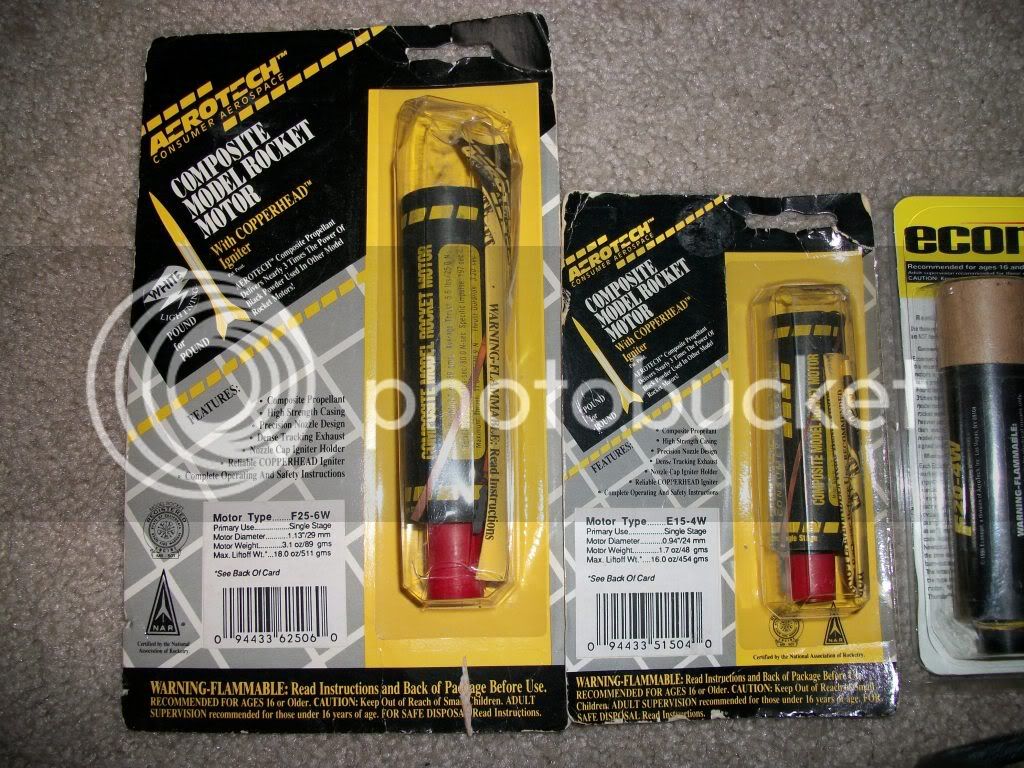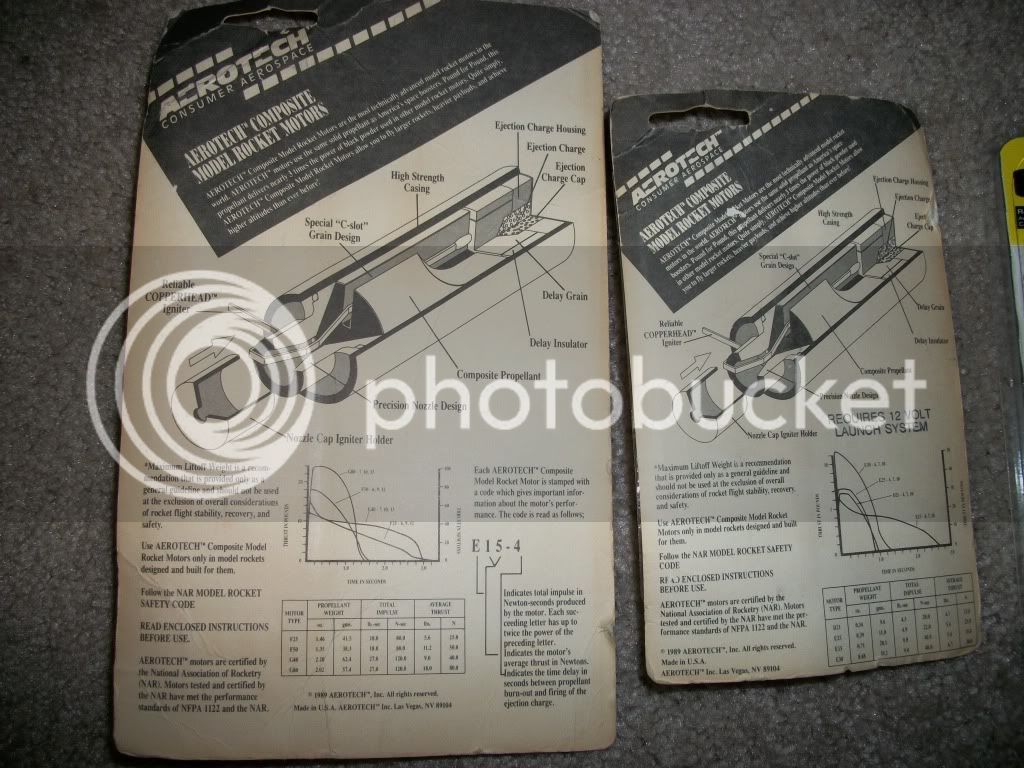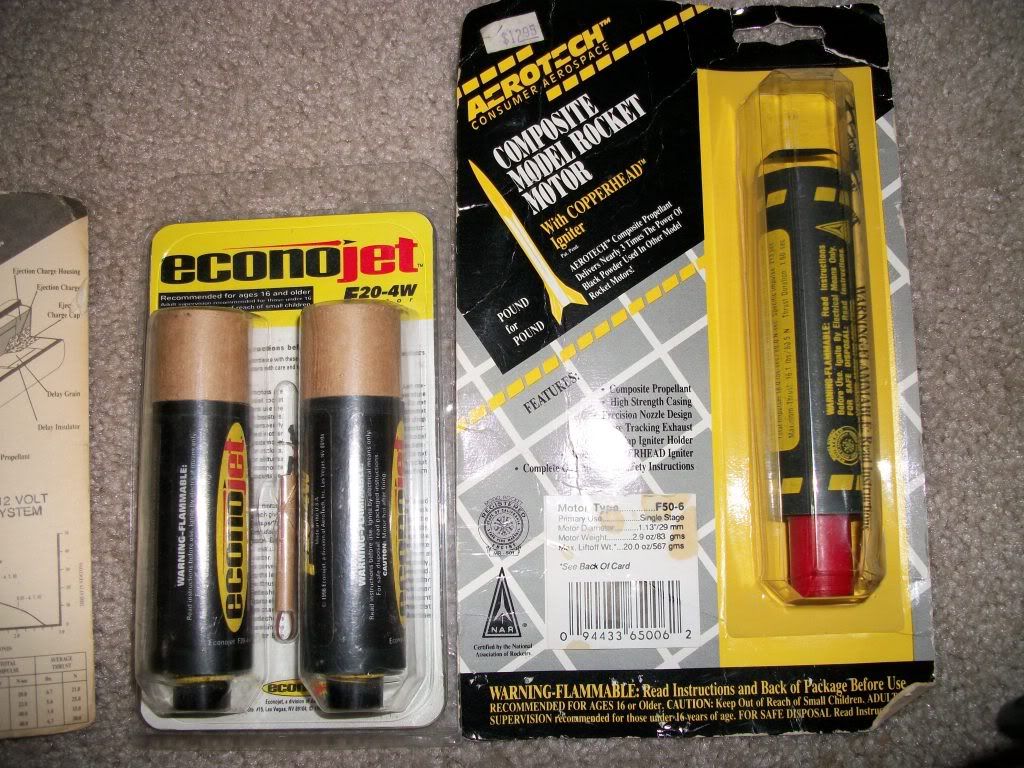Horaryelrod100
Well-Known Member
- Joined
- Dec 6, 2010
- Messages
- 216
- Reaction score
- 0
Came into a recent Original Initiator starter set, and it came with 3 SU motors. Now I know of the crucial nature of black powder motors being stored correctly, and the volitile nature, but I'm curious as to the aging process of these composite units. By the pics it's obvious the blister has yellowed and if the dates are correct.....1994-1989, as actual maunfacture date, not patent date, then are these safe to use? I don;t know the history of how they were stored or otherwise.


 .....
.....
.....Do I even bother attempting to use these, or play it safe and time capsule these things and purchase new ones? Thanks for your input.



.....Do I even bother attempting to use these, or play it safe and time capsule these things and purchase new ones? Thanks for your input.




